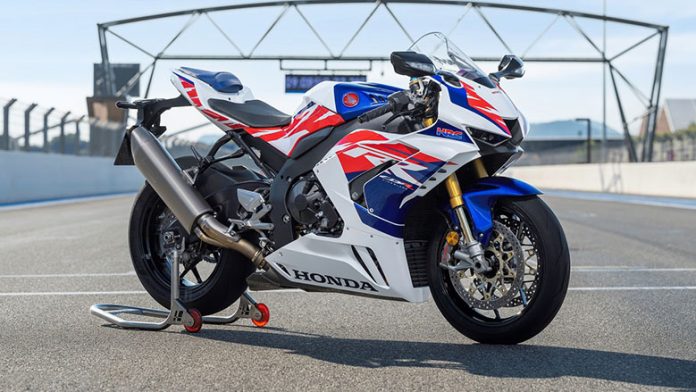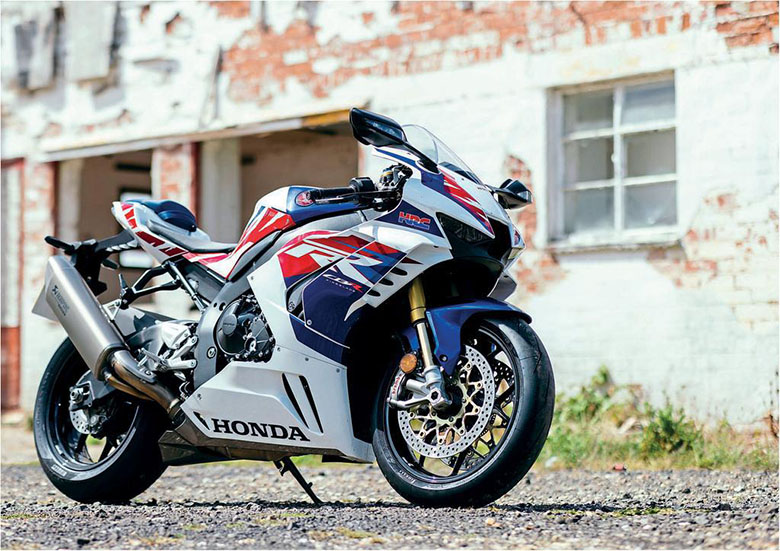This year marks the beginning of the 2022 Honda CBR1000RR-R Fireblade Sports Motorcycle’s 30th year of manufacture. The 2020 model was an all-new, purpose-built motorbike with a laser-like concentration on circuit riding. In 2022, the inline four-cylinder engine’s 160kW @ 14,500rpm has been developed to focus on mid-corner acceleration and drive, with changes to the intake ports, air box, air box funnels, and exhaust mid-section. The final drive sprocket now has 43 teeth instead of 42, resulting in more acceleration across the board. As a result of rider input, Honda’s Selectable Torque Control (HSTC) has been fine-tuned to control traction at the rear tires better, and the throttle response has been enhanced. The pistons in the front Nissin brake calipers have been updated with a new substance and surface treatment to improve braking performance and maintain consistency under extreme racing conditions.
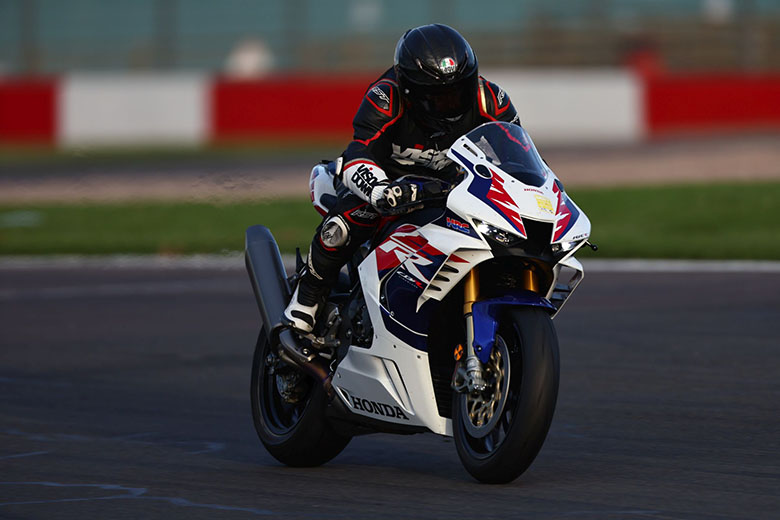
The year 2022 is a landmark for Honda and its Fireblade, as it will celebrate 30 years since the release of what has become a classic in the world of sports bikes. To celebrate 30 years of lucid performance, Honda is releasing a special edition of the CBR1000RR-R Fireblade SP 30th Anniversary with a paint scheme that is both instantly recognizable and evocative, which pays homage to the original 1992 style design.
2022 Honda CBR1000RR-R Fireblade Sports Motorcycle – Features and Specs
Engine
The HRC MotoGP development program significantly created the Fire Blade’s 1000cc, inline four-cylinder semi-cam gear engine. It can produce a maximum of 160 kW of power at 14,500 rpm and 112 Nm of torque at 12,500 rpm. The Fire blade’s engine has the same ‘over square’ 81 mm bore and 48.5 mm stroke as the RC213V, which allows for the same valve size, combustion efficiency, and friction reduction to get these figures. From 13.2:1 to 13.4:1 compression has been achieved.
A ram-air duct at the front fairing’s high-surface pressure tip supplies air to the engine; its aperture is the same size as that of the RC213V MotoGP bike. Maximum induction of moving air with little influence on handling is guaranteed by a ribbed ‘tabulator’ to the right, left, and above the duct opening. The draft angle of the inner wall of the aperture keeps the flow going even when the speed and acceleration are pretty high.
Pressurized air is sent directly through the headstock, around the steering stem, and into the air box, ensuring consistent performance throughout a broad speed range. Honda’s Smart Key technology and a steering angle of 25 degrees allow for this effortless arc. The throttle bodies have 52mm dimensions to provide sufficient airflow.
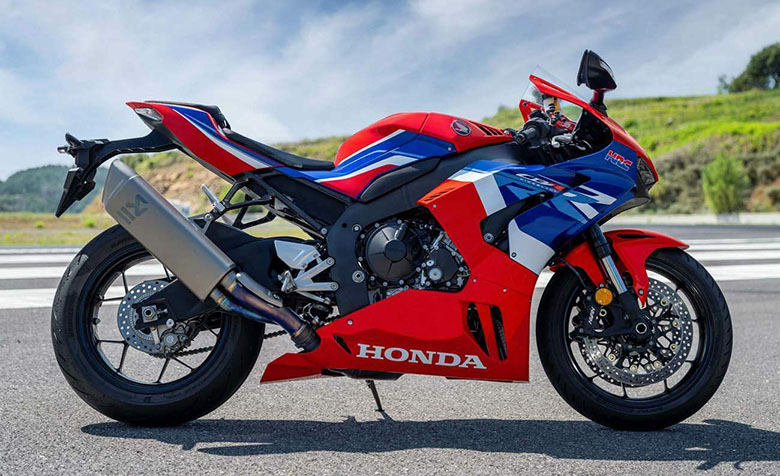
In 22YM, the direction of intake air separation and vortex production was controlled by adjusting the ‘dirty’ side of the air filter, resulting in smoother airflow while increasing the throttle. On the ‘clean’ side, #2 and #3 intake funnels have been reduced by 15mm to receive filtered air. In addition, the intake ports’ inner diameter has been partly reduced to boost airflow velocity, enhancing filling efficiency and, therefore, performance in the mid-range. In addition, the rear sprocket moves from 40 to 43 teeth, again to improve acceleration through the gears in the mid-range while preserving high-rpm performance.
The four exhaust downpipes have an oval cross shape, the same as the intake side. The ‘2’ part of the 4-2-1 exhaust has been reworked for 22YM to improve gas flow to the catalyzer (and the catalyzer itself).
The compact dimensions and low weight of the titanium Akrapovi-designed muffler aid with the vehicle’s centralization of mass and right-side lean angle. A patent-pending valve stopper prevents exhaust-gas leakage when closed, lowering noise levels. The exhaust valve was created with Akrapovi to provide low-rpm torque and high-rpm power.
Inside and out, MotoGP technology is present. Diamond-like Carbon (DLC) is used on the cam lobes to minimize friction, precisely like the RC213V-S. The implementation of this method on a production motorbike for the first time in 20YM allowed for a 35% decrease in the frictional loss in the valve train in comparison to non-DLC-coated lobes.
A semi-cam gear train powers the valve train. The chain is driven from the timing gear on the crankshaft via the idle cam gear, which reduces its overall length and allows it to achieve such high rpm/high cam lift performance.
They use HB 149 Chromium Molybdenum Vanadium (Cr-Mo-V), another Honda invention, steel bolts and forgo using attaching nuts to achieve a weight savings of 50% compared to Chromium Molybdenum steel versions of the con-rods and con-rod caps.
The small-end bushings are constructed of shaved C1720-HT Beryllium copper (because of its high rpm dependability), and the big-end surfaces are coated with DLC to guarantee longevity, like the RC213V-S.
Like the RC213V-S, the pistons are made of A2618 aluminum for lightweight strength and durability. The Ober coating (Teflon and Molybdenum base) and nickel-phosphorous plating for the piston-pin clip-groove on the pistons provide wear resistance at high rpm.
Engine Electronics
Honda introduced throttle by Wire (TBW) on the 17YM CBR1000RR, the company’s first in-line four-cylinder engine. Adapted and refined from the technology seen on the RC213V-S, this innovation places precise throttle control—along with a natural feel—in the rider’s right hand by adjusting the butterfly valve angle (relative to input from the throttle). It’s a key spot, and with 22YM, the TBW return spring load has been lowered to improve the responsiveness and linearity of the throttle in reaction to driver input.
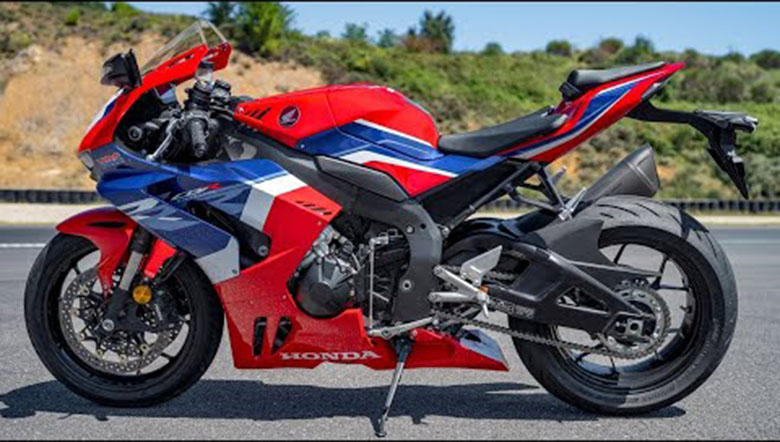
The Honda Selectable Torque Control (HSTC) has also been improved and now has nine settings (plus off); for 20YM Slip rate control (which checks the rate at which slip is altering dependent on the ratio of front/rear wheel speeds) was added to the 2022 Honda CBR1000RR-R Fireblade HSTC to manage fast wheel spin more gently. For 22YM, the software was developed with extensive, high-level input from riders all over the globe, including those of HRC, changing the gap between the intervention time and slip rate for even smoother, intuitive grip control.
Three predefined riding modes allow you to customize your vehicle’s speed, handling, and character. There are five tiers of power (P), the highest of which is level 1. Wheelie (W) manages through levels 1-3 (plus off), with 1 delivering the weakest intervention; Engine Brake (EB) manages through levels 1-3 (plus off), with 1 giving the greatest engine braking.
Chassis
The diamond-shaped main frame is made of 2mm aluminum with the rigidity balance well-tuned; in production, when the four main frame components are welded together, the engine is mounted in six places to enhance the machine’s maneuverability. With maximum feel being the goal, vertical and torsional stiffness are carefully matched against one another.
There is a rake and tail adjustment of 24 degrees and 102 millimeters, bringing the new wheelbase to 1,460 millimeters. 201 kg when wet. A high center of gravity and a front-to-back weight distribution of 53 percent help the vehicle maneuver quickly in both directions.
The RC213V-S employs a swing arm that is 622.7mm in length and is stamped from 18 different thicknesses of aluminum. The horizontal and vertical rigidities are also calibrated to provide grip and feel, much like the main frame.
The Pro-Link rear shock’s top mount is attached through a bracket to the back of the engine block for maximum frame stiffness (and to conserve weight). It also improves high-speed stability and the sense of rear-wheel traction by isolating the wheel from the headstock.
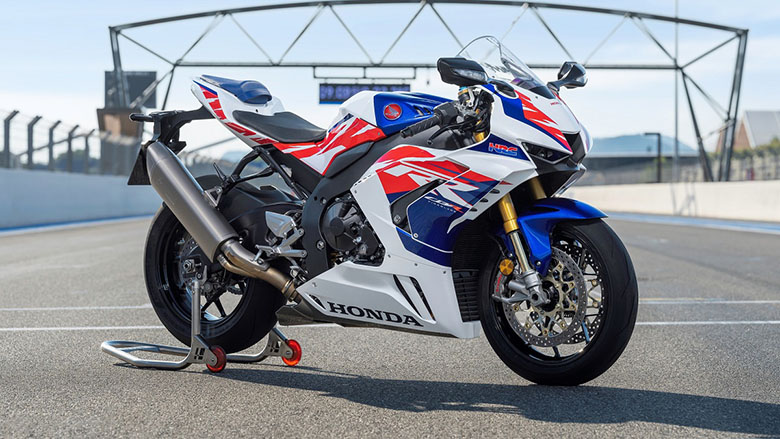
The minimum subframe is made out of a round, thin-walled aluminum tube. Additionally, it is mounted to the frame from above, which reduces the space below the seat and gas tank for a more compact and aerodynamically advantageous riding posture. The foot pegs are higher and farther back, while the handlebars are positioned further front (for leverage).
To reduce chassis geometry shifts while switching from street to track tires, a 200/55-ZR17 is mounted on the 17-inch rear wheel. A 120/70-ZR17 tire is installed on the front wheel.
Aerodynamic Package & Equipment
An aggressive fairing design isn’t only for looks; it also helps reduce lift during acceleration and braking and achieves a class-leading drag coefficient (with a tucked-in rider under track conditions).
When the rider is prone, the gasoline tank lid is low, reducing the available frontal area. The screen is angled at 35 degrees, providing the least resistance to airflow over the rider and seat cowl from the top fairing. Turning is made more accessible because of the slots in the full fairing on the left and right.
The bottom fairing almost reaches the back tire and is designed to direct air in that direction. In dry circumstances, less mood strikes the tire, resulting in reduced drag, whereas in wet situations, less water hits the tire, resulting in better grip. The top side of the rear hugger is carved out to vent air that flows up from below each side of the swing arm, reducing the rear lift. The sides of the rear hugger are contoured to let air flow around the rider’s feet with little resistance.
The result, with the Fire blade in its standard racing configuration, is a class-leading drag coefficient of under 0.270.
2022 Honda CBR1000RR-R Fireblade Sports Motorcycle – Technical Specifications
Engine
| Type | Liquid-cooled 4-stroke 16-valve DOHC Inline-4 |
| Engine Displacement (cm³) | 1000cc |
| No. of Valves per Cylinder | 4 |
| Bore ´ Stroke (mm) | 81mm x 48.5mm |
| Compression Ratio | 13.4:1 |
| Max. Power Output | 160kW @ 14,500rpm |
| Max. Torque | 112Nm @ 12,500rpm |
| Noise Level | Lurban – 74dB, Lwot – 77dB |
| Oil Capacity | 4.0L |
Fuel System
| Carburation | PGM-FI |
| Fuel Tank Capacity | 16.1L |
| C02 Emissions WMTC | 153 g/km |
| Fuel Consumption | 15.2km/L (6.6L/100km) |
Electrical System
| Starter | Electric |
| Battery Capacity | 12-6ah YTZ7S |
Drivetrain
| Clutch Type | Wet, multi-plate hydraulic clutch |
| Transmission Type | Manual 6-speed |
| Final Drive | Chain |
Frame
| Type | Aluminium Twin Tube composite twin spar |
Chassis
| Dimensions (L x W x H) | 2100 x 745 x 1140mm |
| Wheelbase | 1460mm |
| Caster Angle | 24o |
| Trail | 102mm |
| Seat Height | 830mm |
| Ground Clearance | 115mm |
| Kerb Weight | 201kg |
Suspension
| Type Front | SHOWA BPF 43mm telescopic fork with preload, compression, and rebound adjustment, 120mm stroke |
| Type Rear | SHOWA BFRC-Lite Pro-Link swingarm with 10-step preload, stepless compression, and rebound damping adjustment, 137mm stroke. |
Wheels
| Rim Size Front | 17 inch x 3.5 |
| Rim Size Rear | 17 inch x 6.0 |
| Tyres Front | 120/70-ZR17 M/C (58W) Pirelli Diablo Supercorsa SP Bridgestone RS11 |
| Tires Rear | 200/55-ZR17 M/C (78W) Pirelli Diablo Supercorsa SP Bridgestone RS11 |
Brakes
| ABS System Type | 2 Channel |
| Front | 330mm disc with radial-mount 4-piston Nissin caliper |
| Rear | 220mm disc with 2-piston Brembo caliper |
Instruments & Electrics
| Instruments | TFT-LCD |
| Security System | Honda Smart Key |
| Headlight | LED |
| Taillight | LED |
| Auto Winker Cancel | Yes |
| Quickshifter | Optional |

